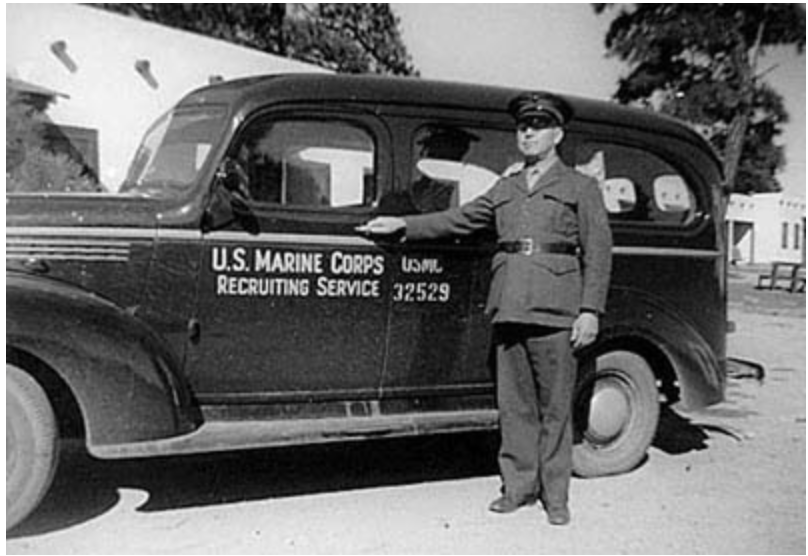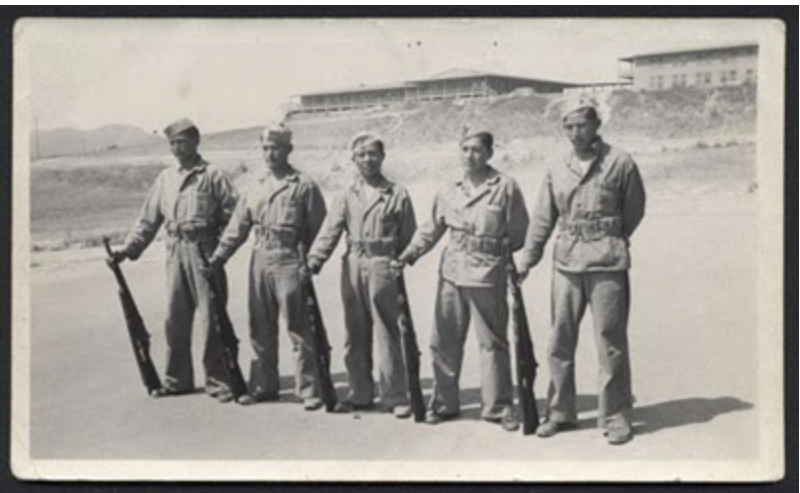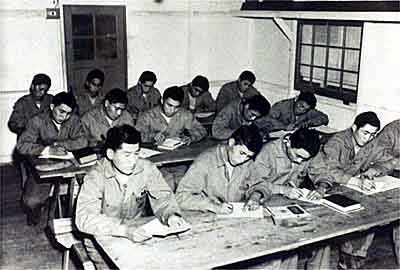After the attack of Pearl Harbor in 1941, Phillip Johnston proposed the idea of using Navajo for combat communication to the Marine Corps and they immediately started recruitment (Northern Arizona University).

"The recruiting service" (Northern Arizona University)
In 1942, the U.S. Marines recruited men who met Marine qualifications, and were fluent in Navajo and English to become “Code Talkers.” They started with twenty nine recruits (Silversmith).


"Code Talkers learning the code" (Northern Arizona University), (Windtalkers)
These twenty nine Marines were tasked with creating a code within the Navajo language that could be used for secure military communication. To develop the type one code, the 29 code talkers agreed upon Navajo words for each letter of the alphabet. For example, wol-la-chee, be-la-sana, and tse-nill are for the letter A. Since the Code Talkers had to memorize all the words, they used things that were familiar to them. The men used names of animals for these letters. They then translated those words into English words, and the first letter of the word was the letter for the code (Native Words). Type 2 codes were English words that were directly translated to military terms, there were 211 type 2 terms which later expanded to 411 terms (DaveW). Once the code was constructed, the code talkers could translate three lines of code to English words in about twenty seconds which took about thirty minutes for machines to translate (Lenore). This proved to be a major advantage in battles because the Code Talkers translated about ninety messages to the enemy's one.
"A Navajo Code Dictionary" (Navajo Code Talkers Dictionary)